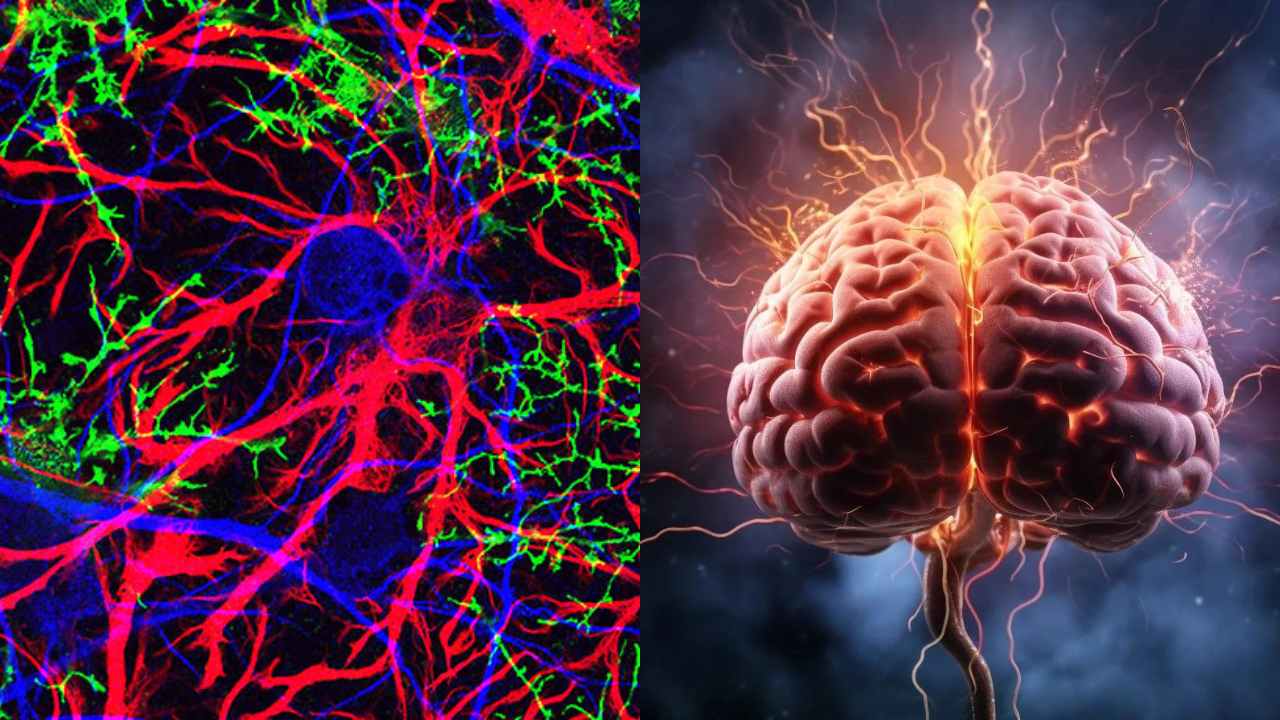Researchers have found a new hybrid brain cell that bridges the gap between neurons and astrocytes. This newly identified cell has the capacity to release neurotransmitters, like glutamate. It means it can potentially impact conditions such as epilepsy and memory consolidation.
In the human brain, there are two major cell families, neurons and glial cells. Now scientists have found a previously concealed hybrid cell, one that stands midway between these two categories.
A strange new hybrid type of brain cell has been discovered, and it could explain how some neurodegenerative conditions, such as Parkinson’s, develop https://t.co/tvSeq9aBzL
— New Scientist (@newscientist) September 6, 2023
Throughout the history of neuroscience, it has been widely acknowledged that the brain primarily relies on neurons for their ability. To support these functions, glial cells play a pivotal role by performing various structural, energetic, and immune functions, alongside maintaining essential physiological constants.
Astrocytes are the glial cell types that are close to encircle synapses. Neurotransmitters released into the synapses to facilitate information transmission between neurons. Consequently, neuroscientists have long speculated about the active role astrocytes may play in synaptic transmission and information processing.
New Breakthrough
A team of neuroscientists from the Department of Basic Neurosciences at the Faculty of Biology and Medicine of the University of Lausanne (UNIL) and the Wyss Center for Bio and Neuroengineering in Geneva have put an end to years of debate by identifying a new cell type. this new cell type exhibits characteristics akin to astrocytes while secreting neurotransmitters that are necessary for synaptic transmission.
To discover astrocytes’ ability to release neurotransmitters, researchers first examined the molecular contents of astrocytes using modern molecular biology techniques. Their aim was to detect evidence of the molecular machinery required for the rapid release of glutamate.
The precision enabled by single-cell transcriptomics approaches allowed us to identify the presence of transcripts related to vesicular proteins (VGLUT) in cells with astrocytic profiles. These proteins are responsible for filling neuronal vesicles dedicated to glutamate release. We also identified other specialized proteins essential for the function of glutamatergic vesicles and their ability to communicate rapidly with other cells.
Ludovic Telley, Assistant professor at UNIL and co-director of the study
Subsequently, the researchers sought to confirm the functionality of these hybrid cells, specifically their capability to release glutamate at a speed comparable to synaptic transmission. They used advanced imaging techniques to visualize glutamate release from vesicles within brain tissues and in live mice.
We have identified a subgroup of astrocytes that respond to selective stimulations with rapid glutamate release, occurring in spatially delimited areas of these cells resembling synapses.
Andrea Volterra, honorary professor at UNIL and co-director of the study
Moreover, this glutamate release was found to influence synaptic transmission and regulate neuronal circuits. The research team demonstrated this by suppressing the expression of VGLUT in the hybrid cells.
Roberta de Ceglia, first author of the study and senior researcher at UNIL, elaborated, “They are cells that modulate neuronal activity, controlling the level of communication and excitation of the neurons.” The machinery’s absence harms long-term potentiation, impacting mouse memory.
This discovery helps to understand brain disorders. The research team’s targeted disruption of glutamatergic astrocytes demonstrated effects on memory consolidation. And revealed links to conditions such as epilepsy. Additionally, the study suggests that glutamatergic astrocytes may play a role in regulating brain circuits involved in motor control. And also potentially offering therapeutic targets for Parkinson’s disease.
Andrea Volterra looks ahead to future research possibilities, stating, “In this newfound cell type, situated between neurons and astrocytes, we have a wealth of research prospects. Our upcoming studies will investigate the potential protective role of this cell type against memory impairment in Alzheimer’s disease and explore its relevance in regions and conditions beyond those currently examined.”
Also read:







